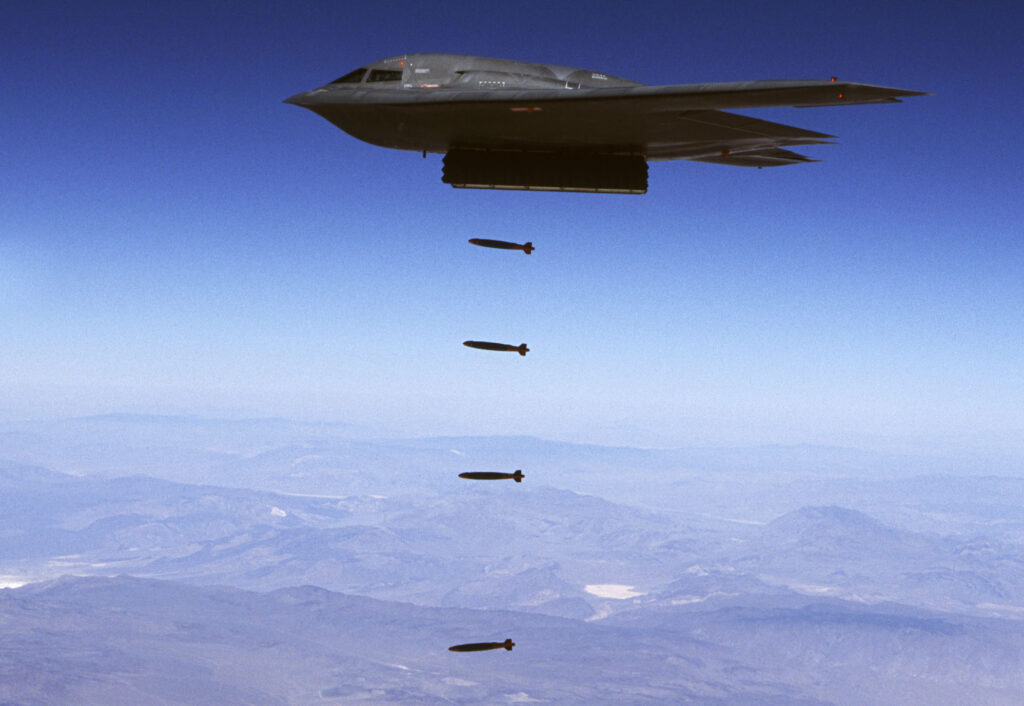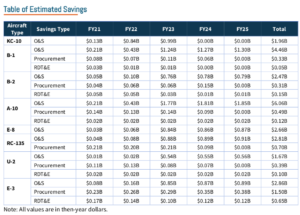
B-2 Spirit
WASHINGTON: Air Force Chief of Staff Gen. David Goldfein says his service will cut $30 billion over five years to fund future priorities but he hasn’t said what he would cut.
Todd Harrison at the Center for Strategic and International Studies (CSIS) says the simplest and most effective way would be to rapidly retire lots of legacy aircraft.
That said, the new CSIS study cautions: “For the Air Force to achieve the savings it desires, it must balance the strategic consequences of proposed cuts with the strategic value of the new investments it plans to make.”
Harrison notes that Goldfein himself (in remarks Nov. 6 at an Air Force Association briefing) has said that the focus of Air Force budget cutting deliberations over the past few months was squarely on legacy platforms that likely will not be fit for purpose in the 2030 to 2038 timeframe.
The study explains that Goldfein’s goal is to generate enough savings to invest in four priority efforts: “Connecting the Joint Force ($9 billion); Offensive and Defensive Space ($9 billion); Generating Combat Power ($9 billion); and Logistics Under Attack ($3 billion).”
Harrison’s study pinpoints eight aircraft that have already been considered by the Air Force as potential candidates for near-term retirement: the KC-10 tanker; the B-1 and B-2 bombers; the A-10 close air support aircraft; the E-8C Joint Surveillance Target Attack Radar System (JSTARS) airborne battle management and command and control aircraft; the various RC-135 intelligence gathering aircraft; the U2 spy plane; and the E-3 airborne warning and control (AWACS) plane.
Cutting these aircraft from the Air Force fleet would save $29.7 billion, the study says.
However, the study warns that no matter how they are enacted, $30 billion in programmatic cuts “will require significant tradeoffs and risks” for the Air Force. For example, it admits that the savings found in its analysis “would come at the expensive of current capabilities and could increase risks in some mission areas.”
One example, the study said, is that “retiring the B-2 would leave the nation without a long-range penetrating strike aircraft and would weaken the airborne component of the nuclear triad.”
The report says the expected savings would be:
KC-10: Accelerate the retirement of the KC-10s to fiscal 2022 and save roughly $2.0 billion.
B1-B: A phased-in retirement of the B-1 over the next three years could save approximately $4.8 billion.
B-2: Retiring the B-2 fleet by 2023 could save roughly $2.9 billion.
A-10: A phased-in retirement of the 281 A-10 aircraft by 2023 could save approximately $6.7 billion. (This, of course, is easier said than done given Congress’s long standing determination to keep the venerable planes in service, especially with the Air National Guard.)
E8-C: Retiring the E-8C by 2023 could save an estimated $2.7 billion.
RC-135: Retiring the entire fleet of 25 RC- 135s — including the RC-135V/W Rivet Joint, used for airborne signals intelligence collection, analysis, and dissemination, and the RC-135S Cobra Ball and RC-135U Combat Sent that provide optical and electronic reconnaissance capabilities — by 2023 could save approximately $3.5 billion.
E-3B/C/G: Retiring all 31 AWACS variants by 2023 could save $5.0 billion.
U-2: Retiring the entire fleet of 27 U-2s by 2023 would save approximately $2.2 billion.
The study, CSIS caveats, “only examines the savings that could be achieved by eliminating entire fleets of aircraft.” The reason is that retiring entire fleets would save more “because the fixed costs of aircraft-specific maintenance and training are a substantial portion of overall sustainment costs, and these savings are not realized until all aircraft in a fleet are retired.” (This, of course, is the argument put forth by the Air Force when it first advocated cutting the A-10 fleet. Some facts are stubborn.)
Obviously, the Air Force could retire partial numbers of various aircraft — including F-16 and/or F-15 fighter jets in advance of the F-35As coming into the field to replace them. The service also could “retire part of the MQ-9 fleet in response to the Trump Administration’s plans to reduce U.S. military operations in the Middle East.”
However, CSIS warned, “the savings achieved from these partial fleet reductions would be minimal compared to the savings from eliminating whole fleets. Moreover, aircraft like the MQ-9 are among the newest (average age of six years), have the lowest flying hour cost (less than $800 per hour), and have the highest mission capable rate (90 percent) of any aircraft in the Air Force’s inventory.”
Navy jet trainer fleet operations remain paused after engine mishap
One week after the incident, a Navy spokesperson says the service is continuing to assess the fleet’s ability to safely resume flight.


























